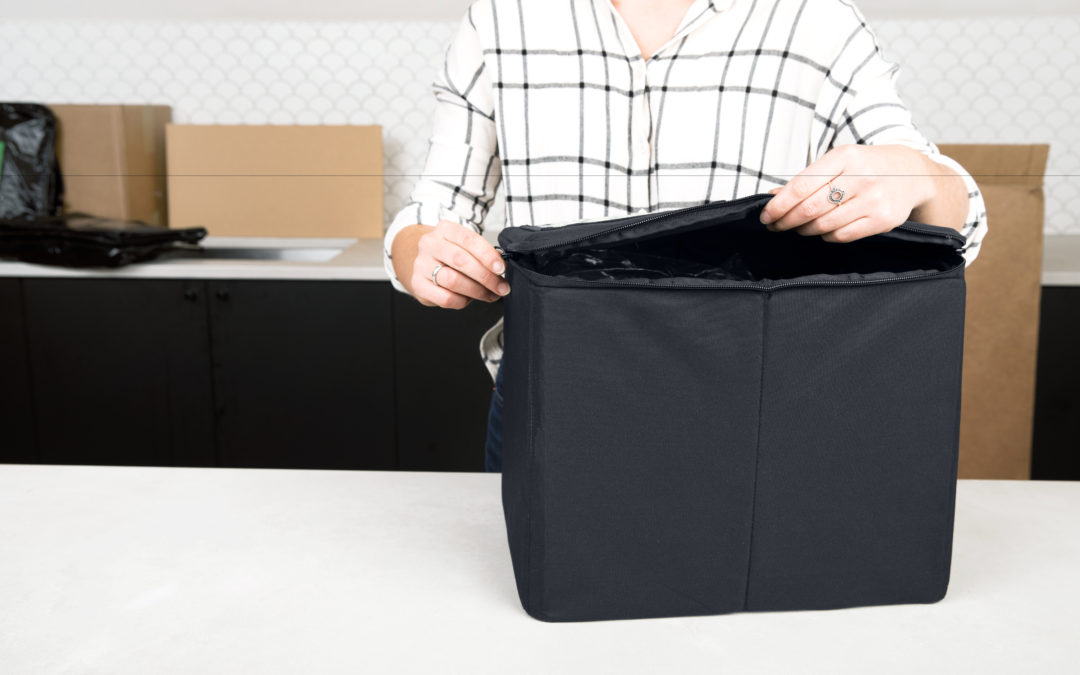For many of us, we’ve heard the 3 R’s (reduce, reuse and recycle) over and over again from childhood to adulthood. They’ve been ingrained into our behavior and our schooling since we were young. Yet, the main focus has primarily been on the 3rd R: Recycle.
Yes, recycling is a good habit to be in and I don’t want you to change that, but I do want you to take a moment to think about your recycling habits.
What is it that you recycle today?
- Cardboard boxes
- Paper–envelopes, printer paper, mail, etc.
- Food containers–from berries, takeout, nuts, milk, egg cartons, etc.
- Glass jars
- Anything with a little triangle and a “1” or “2” in the triangle…
We are in the habit of tossing anything into the recycling bin with the expectation that we are doing something beneficial for the environment. While we do this personally in our homes, this habit continues into retail operations as well. Think cardboard boxes, polybags, excessive tape, plastic hangers, etc., and most of these items have a pretty short life span within stores.
Retail supply chains have a lot of moving parts, literally and figuratively, which means there can be plenty of opportunity for growth in creating a circular supply chain.
Circularity is where a product is reused or regenerated for extended use. Its lifespan extends single-use and helps keep materials in the circulation of life rather than into landfills.
How can we be better about fostering a circular economy? Through prioritizing the first two R’s: Reduce and Reuse.
Applying “reduce and reuse”
Earlier this year, Gartner shared a study on where and what organizations will prioritize when it comes to sustainability goals in their supply chain. A major focus of this reprioritization is within packaging.
Specifically, Gartner predicts 20% of organizations with sustainable packaging goals will shift their focus from recycling and eliminating plastics to reducing the carbon footprint of their packaging by 2026.
Cardboard is another main culprit impacting your carbon footprint at a large scale.
After speaking with some local retailers nearby, I learned that many retailers use a cardboard box just once before it gets broken down and immediately thrown into the recycling bin. Sometimes, it skips recycling and just gets thrown into the trash…
Not only is this detrimental to sustainability goals, it is also costly. Cardboard isn’t cheap. Imagine spending $1.50 on every cardboard box to transfer your apparel from a distribution center (DC) to a local store and you have 15 stores to replenish twice every month with a plethora of single-use boxes. That’s $1.50 you throw away per box, per transfer. Over an entire year, this number will add up quickly.
Where can retailers adjust to encourage less waste–for the environment and their bottom line?
3 supply chain tips
Conduct a Materials Audit
Gain a better understanding of the materials you are using to package and ship your products from warehouse to DC, or direct to your consumers. Is there extra packaging that doesn’t provide much value? Are your products safe and secure in what they are traveling in? Are there wasteful or non-recyclable materials being used that could be swapped? When you employ circular design principles at the front end, you can significantly reduce waste at the end of your product’s lifecycle through packaging and transportation alone.
Reduce Air Space
Air space can have a major impact on your environmental impact. When less is shipped inside a box that will still take up the same amount of space in a freight truck regardless of what’s inside it, that means you’re paying for air to travel. Highly wasteful here both to the environment and your bottom line. Work with your packaging partner or 3PL to find ways to reduce your air space so you only ship what you need to in a package that adheres to your products.
Redesign Your Packaging
Are you still shipping in cardboard boxes? Do you have plastic casings tucking your products in? Are packing peanuts still in your expense report? If so, what is holding you back from reusable packaging? Cardboard boxes, even when made from recycled materials, still only get used 1-4 times before they are discarded. Some don’t get recycled at all and end up in landfills. There are more sustainable options. Reusable packaging can increase your cost savings by 15% plus and can be reused up to 200 times depending on the partner you work with..
The hardest part of switching to a more sustainable approach in your supply chain is the switch itself. It doesn’t have to be challenging when you work with a partner that is there with you every step of the way.
If you want to learn more about how to swap seamlessly, click here to schedule a call and we’ll strategize together.

